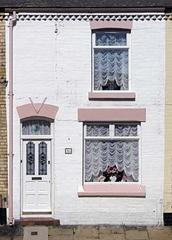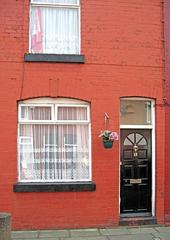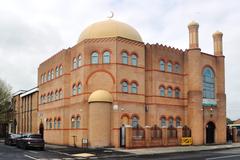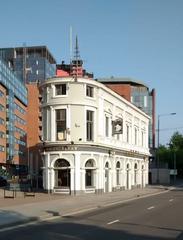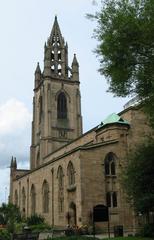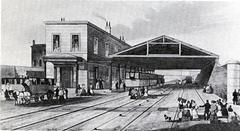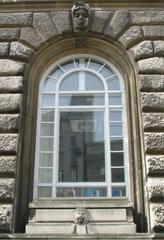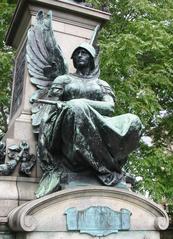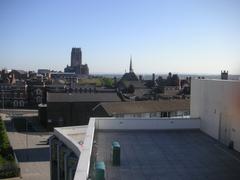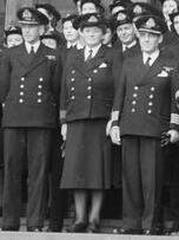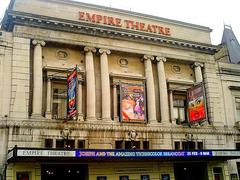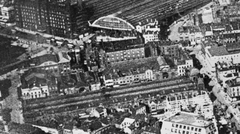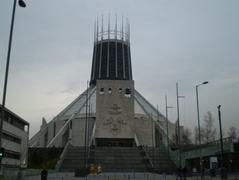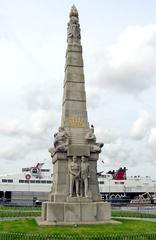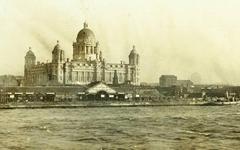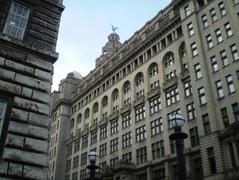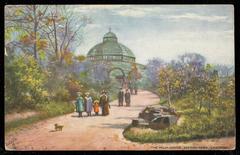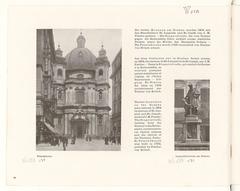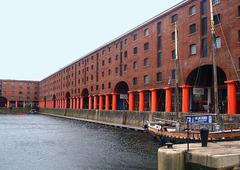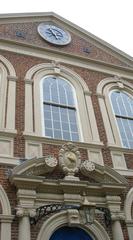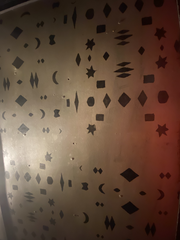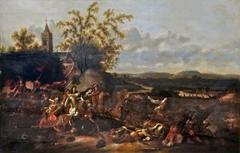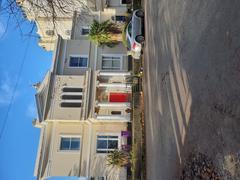Lewis’s Department Store Liverpool: Visiting Hours, Tickets, and Historical Significance
Date: 04/07/2025
Introduction
Lewis’s Department Store in Liverpool is an enduring emblem of the city’s commercial, architectural, and cultural legacy. Founded in 1856 by David Lewis, the store pioneered the British department store concept and introduced innovative retail traditions, including one of the world’s first Christmas Grottos. Although it ceased trading in 2010, the Grade II listed Lewis’s Building remains a prominent landmark, attracting visitors interested in Liverpool’s history, architecture, and evolving cityscape. This comprehensive guide covers Lewis’s historical evolution, architectural highlights, current access and visiting information, and nearby attractions to enrich your Liverpool experience.
For further background, see BBC Liverpool’s historical coverage, the Wikipedia entry on Lewis’s Building, and the Central Village redevelopment site.
Table of Contents
- Introduction
- Founding and Early Growth (1856–1910s)
- Architectural Evolution and Expansion (1910s–1950s)
- The Golden Age: 1950s–1970s
- Cultural Significance and Iconic Features
- Challenges, Decline, and Closure (1980s–2010)
- The Building’s Legacy and Current Status
- Visiting Lewis’s Department Store: Hours, Tickets, and Accessibility
- Nearby Attractions and Travel Tips
- Frequently Asked Questions (FAQ)
- Visual Gallery
- Additional Resources
- Conclusion
Founding and Early Growth (1856–1910s)
David Lewis established Lewis’s at 40 Ranelagh Street in 1856, initially focusing on men’s and boys’ clothing (BBC Liverpool). The store’s reputation for quality and value spurred rapid expansion, including women’s clothing by 1864 and, by the 1870s, a diverse array of goods. Lewis’s was at the forefront of the British department store movement.
In 1879, Lewis’s introduced the “Lewis’s Bon Marche” Christmas Grotto, one of the world’s first, starting a tradition that spread across the UK and became an annual highlight for generations (BBC Liverpool). The brand’s popularity led to new stores opening in Manchester, Birmingham, Sheffield, and Leicester.
Architectural Evolution and Expansion (1910s–1950s)
The original 19th-century premises made way for a new building in the 1910s and 1920s, designed by Gerald de Courcy Fraser and incorporating the adjacent Watson Building (Wikipedia: Lewis’s Building). The store’s importance in Liverpool’s cityscape was further solidified post-World War II, when bombing raids caused substantial destruction. A comprehensive rebuild, again under Fraser, began in 1947, culminating in the nine-storey, 420,000-square-foot flagship reopening in 1956. This modern structure introduced contemporary amenities and design, setting the tone for Lewis’s mid-20th-century identity.
The Golden Age: 1950s–1970s
The post-war decades were Lewis’s golden era. The rebuilt store became a symbol of Liverpool’s renewal, offering everything from fashion and homewares to specialized services under one roof (BBC Liverpool). The fifth floor, with its self-service cafeteria, Red Rose Restaurant, and hair salon—plus a notable ceramic mural—captured the spirit and design sensibilities of the 1950s. Although closed since the early 1980s, preserved interiors occasionally feature in heritage exhibitions.
Cultural Significance and Iconic Features
Lewis’s transcended its retail function, becoming a cornerstone of Liverpool’s social life. The entrance’s “Liverpool Resurgent” statue by Sir Jacob Epstein, installed in 1957, celebrates the city’s resilience and is a beloved meeting point (Wikipedia: Lewis’s Building). The statue was celebrated in the folk song “In My Liverpool Home” and remains affectionately known as “Dickie Lewis.” The building also features a 65-metre-long mural inspired by the 1951 Festival of Britain, contributing to its artistic heritage (BBC Liverpool).
Challenges, Decline, and Closure (1980s–2010)
The late 20th century saw Lewis’s face mounting competition and shifting consumer trends. Entering administration in 1991, some branches were acquired by Owen Owen, Debenhams, and Allders, but the Liverpool flagship struggled. After liquidation in 2007, Vergo Retail operated the store briefly before its closure in June 2010, ending 154 years of trade (BBC Liverpool).
The Building’s Legacy and Current Status
Today, the Grade II listed Lewis’s Building remains a distinguished presence in Liverpool. The basement houses a PureGym, and upper floors are being converted as part of the Central Village redevelopment, including retail, leisure spaces, and a 125-room Adagio hotel (Wikipedia: Lewis’s Building). The “Liverpool Resurgent” statue and fifth-floor interiors attract ongoing interest from historians and visitors. Occasional exhibitions highlight the building’s unique heritage (BBC Liverpool).
Visiting Lewis’s Department Store: Hours, Tickets, and Accessibility
- Visiting Hours: The exterior and public art are accessible 24/7. Interior access to “The Department” office and leisure complex is generally Monday–Friday, 9:00 AM–5:00 PM (The Department Liverpool). PureGym and Adagio Aparthotel have their own hours. Interior access for heritage tours or exhibitions is occasional—check local event listings.
- Tickets: Admission is free for exterior viewing. Special exhibitions or tours may require advance booking and tickets.
- Accessibility: The building is centrally located, with step-free access and modern lifts. Accessible washrooms and cycle storage are available in redeveloped areas.
- Getting There: Situated at the corner of Renshaw Street and Ranelagh Street, the site is near Liverpool Central and Lime Street stations, with multiple bus routes and car parks nearby.
Nearby Attractions and Travel Tips
- Liverpool ONE: Major shopping and dining hub (The Crazy Tourist).
- St George’s Quarter: Victorian architecture and cultural venues.
- World Museum & Walker Art Gallery: Free entry to extensive collections.
- Albert Dock: UNESCO World Heritage waterfront.
- Liverpool Cathedral: Panoramic views and historical exhibitions.
Combine your visit to Lewis’s with these attractions for a full Liverpool experience. Use public transport where possible and consult Liverpool City Council tourism for current visitor information.
Frequently Asked Questions (FAQ)
Q: Can I visit inside Lewis’s Department Store building?
A: Interior access is restricted; public entry is possible during some events or heritage open days. Exterior viewing and photography are always permitted.
Q: Are guided tours available?
A: Some heritage walking tours include Lewis’s; check listings for special tours or open days.
Q: Is there an admission fee?
A: Exterior viewing is free; some events or exhibitions may require a ticket.
Q: What are the nearest public transport options?
A: Liverpool Central and Lime Street stations are within easy walking distance.
Q: Is the building wheelchair accessible?
A: Yes, redeveloped areas are fully accessible.
Visual Gallery
- Lewis’s Department Store Exterior: Portland stone façade, classical columns.
- “Liverpool Resurgent” Statue: Iconic bronze by Jacob Epstein.
- Fifth Floor Cafeteria (archival): Preserved mid-century interiors (featured in exhibitions).
For current images and virtual tours, consult the official website.
Additional Resources
- BBC Liverpool
- Wikipedia: Lewis’s Building
- Central Village Project
- The Department Liverpool
- Liverpool Echo: Redevelopment Plans
- Liverpool Echo: Last Days Inside Lewis’s
- Liverpool City Council Tourism
- Historic Liverpool
- Liverpool Heritage Tours
- Historic England – Lewis’s Listing
Conclusion
Lewis’s Department Store stands as a testament to Liverpool’s commercial innovation, architectural ambition, and communal spirit. While the original retail hub has closed, the building’s legacy continues through heritage preservation, redevelopment projects, and its ongoing role as a city landmark. Whether you’re a history buff, architecture aficionado, or casual visitor, Lewis’s invites you to explore Liverpool’s vibrant past and witness its evolving future. Stay updated by checking official sources, and download the Audiala app for interactive guides and curated Liverpool heritage content.
